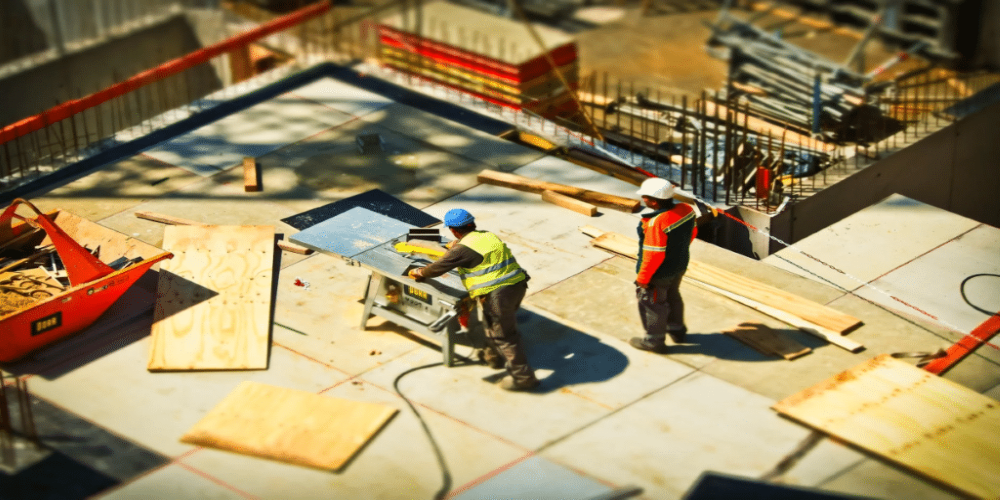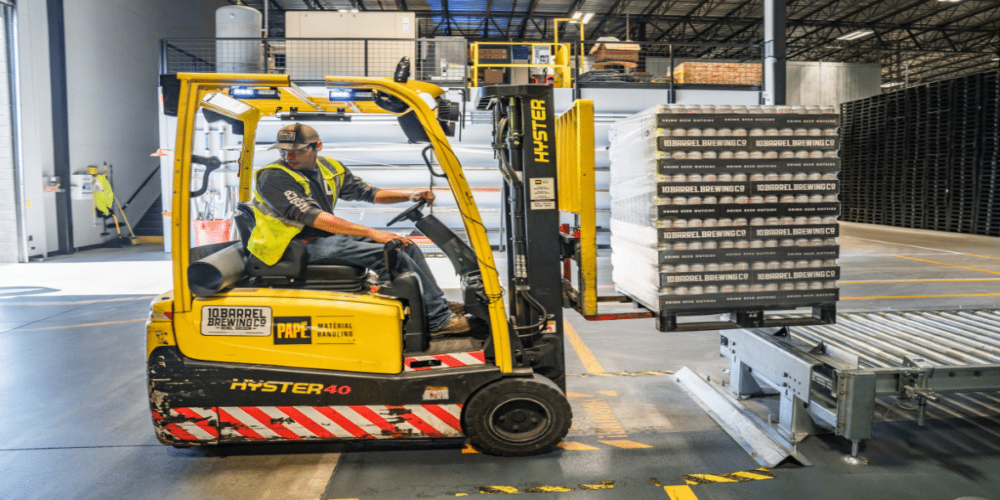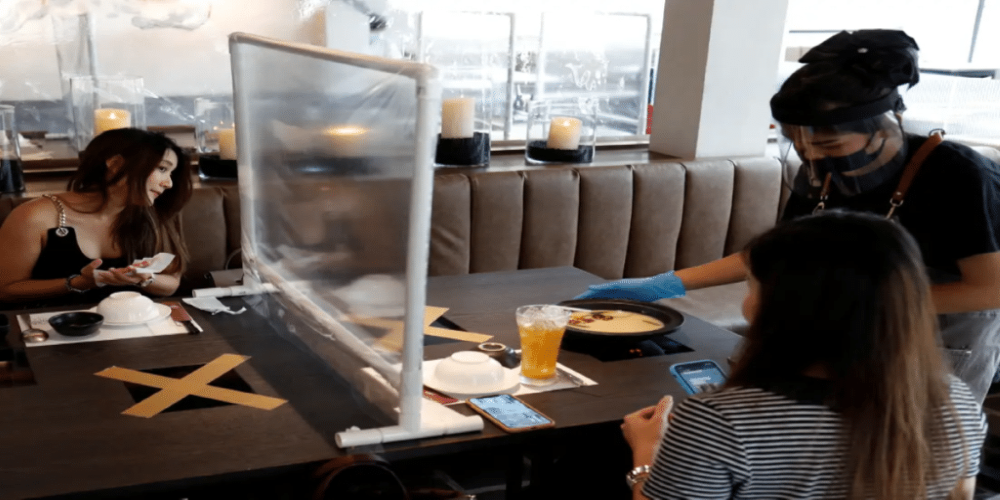
25 Jun Guidance for Returning to Work
As part of the Government’s commitment to further easing the lockdown period, they have recently published guidance to continue to encourage sectors to get back to work to embrace the ‘new normal’, as well as helping employers and employees establish safe working conditions.
These eight papers, each covering a specific sector, stipulate that most would not require additional protective equipment, instead highlighting the importance of undertaking COVID-19 risk assessments, increasing cleaning protocols and redesigning workplaces to ensure the required distance between workers can be adhered to.
In this blog, we’ve put together what general advice is currently being given to businesses looking to reopen and what each sector must do to ensure safe working practices.
The General Guidance
Every employer must carry out a COVID-19 risk assessment before any employee returns to work; this should be in consultation with any relevant worker or trade union bodies. And any company with more than fifty employees is expected to widely publish their risk assessments.
It’s also recommended that employers create shift timetables where possible to do so, to ensure that employees are working within fixed teams, or ‘bubbles’ to limit the risks.
As well as general advice for employers, these documents have outlined in-depth guidelines and practical advice for each sector as we continue to get people back into work.
So, what exactly will each sector need to be aware of?
Outdoor & Construction Work

Employers should ensure that employees are arriving at different times, provide multiple entrances to sites and erect screen barriers to separate workers, if possible.
Employees should also be restricted to fixed teams or partners and remain within a single zone on the site to reduce the numbers of people they’re in contact with.
Management is now also required to reduce job rotation. In other words, every worker should work on a single task throughout the day to limit the tools they’re using and prevent non-essential trips to other sites or retailers.
Social distancing is nearly impossible to enforce in these kinds of environments, so where necessary workers should be working back-to-back or side-to-side to limit any spread of the disease.
Offices & Call Centres
All employers must rethink the layout of their offices by moving workstations apart from each other and introducing a one-way system around the office.
Screens can be used if space limits the ability to move workstations around, but hot desking should be avoided. Each employee must also be tasked with cleaning down their space thoroughly on a regular basis.
Meetings should only be called only where necessary – whether internal or external. However, if a meeting is required, then the correct social distance guidelines should be put into place, and surface sanitisation should be undertaken afterwards.
If you require any help with redesigning your office to ensure that you’re maintaining the correct procedures, then Optrys have the experience, knowledge and know-how to transform your office.
Factories, Warehouses and Plants

Similar to the construction industry, employees should stagger arrival times, reduce movement within the premises, work within fixed teams, reduce job and tool rotation, and wear appropriate PPE where it isn’t possible to socially distance.
Managers should think carefully about the factory layout to allow people to work at a greater distance from each other, and these areas should be marked very clearly. Breaks and lunchtimes should also be staggered to ensure that workers are limiting their interactions through the day.
Research Facilities & Laboratories
In addition to staggering work start times and looking to change the layout of workspaces, employers must limit the number of technicians within the lab at any one time, provide appropriate PPE, practice social distancing and reduce the use of ‘high touch’ items, such as test equipment.
In areas where there is a high risk of airborne particles, employers should ensure that the area is capable of efficiently filtering airflow.
Private Dwellings
Carers, cleaners and other professionals that are required to enter someone else’s home must first discuss with the household whether it will be possible to socially distance and ask that all internal doors are left open to ensure minimal contact and improved airflow.
Workers should wash their hands upon arrival and sanitise on exit, employ correct PPE and practice social distancing where possible.
Those entering another home should ideally travel alone and use their own transport. However, for professionals like delivery drivers, where this is not possible, it is recommended that shared journeys are with the same individuals.
Restaurant Kitchens
Although we’re not definitely sure on the timeframe as to when people may well be able to go out and enjoy their favourite restaurant again, there are some clear guidelines for those working behind the scenes.
Access to the kitchen should be limited to as few people as possible and interaction between kitchen staff and workers from other areas of the restaurant, i.e. delivery drivers, should be minimised.
The guidance here does stipulate that it would be challenging for most kitchens to rearrange their workstations, but employers should consider installing wipeable panels to separate each part of the kitchen.
Chillers, freezers and pantries should also be strictly limited to one at a time.
Non-Essential Shops
Essential shops remained open throughout the lockdown, and now, as per government approval, many non-essential shops, such as clothing stores are beginning to open again.
All shops must be limiting the number of customers on the premises at any one time, to ensure that social distancing is possible – taking both high-traffic areas and floor space into account.
It is also recommended that employers and managers restrict the levels of customer service they provide to only those which can be done safely and reasonably.
Vehicles
Vehicles should be cleaned regularly and should contain a sufficient supply of hand sanitation and cleaning products.
Where more than one person is working in a vehicle, such as delivery teams or long-haul drivers, then teams should remain fixed, and the correct PPE should be worn throughout when necessary.
Hospitality

Image from BusinessInsider
When it comes to the hospitality industry, employee safety is just as important as the safety of customers. While we don’t know precisely when the hospitality industry might be able to get moving again, the latest government guidelines have been handed down to ensure that both customers and workers can be correctly safeguarded.
This includes using correct PPE such as facemasks and visors and increasing the frequency of cleaning routines – focusing mainly on high traffic areas, such as bars, chairs, tables, door handles, glasses, cutlery and the edges of doors.
As with the retail industry, hospitality businesses are advised to minimise the handling of cash whenever possible. This includes encouraging contactless payments, which should be advertised on signage and on a business’s website. Where cash handling is impossible to avoid, it’s advised that it is placed into and a bowl and the cash must then be handled by someone wearing gloves.
Where appropriate it’s thought that the Government may bring in a registration system for customers that wish to go to a restaurant or bar as we’ve seen in other countries, and all orders may be completed via an app to ensure minimal contact with staff.
Layouts will also need to be rearranged to ensure a safe distance between tables, and screens may be erected on tables to separate diners.
Finally, it’s suggested that managers and owners must encourage staff to follow their own personal hygiene routine. Soaps, sanitisers and disposable clothes should all be readily available, and all staff must wash their uniforms as soon as they return home from work.
If you require any help rearranging your working space, whatever that might be, then why not contact us today? We can work closely with you to manage your project to ensure that your staff feel confident to return to the workplace, feeling productive, happy and above all, safe.

Sorry, the comment form is closed at this time.